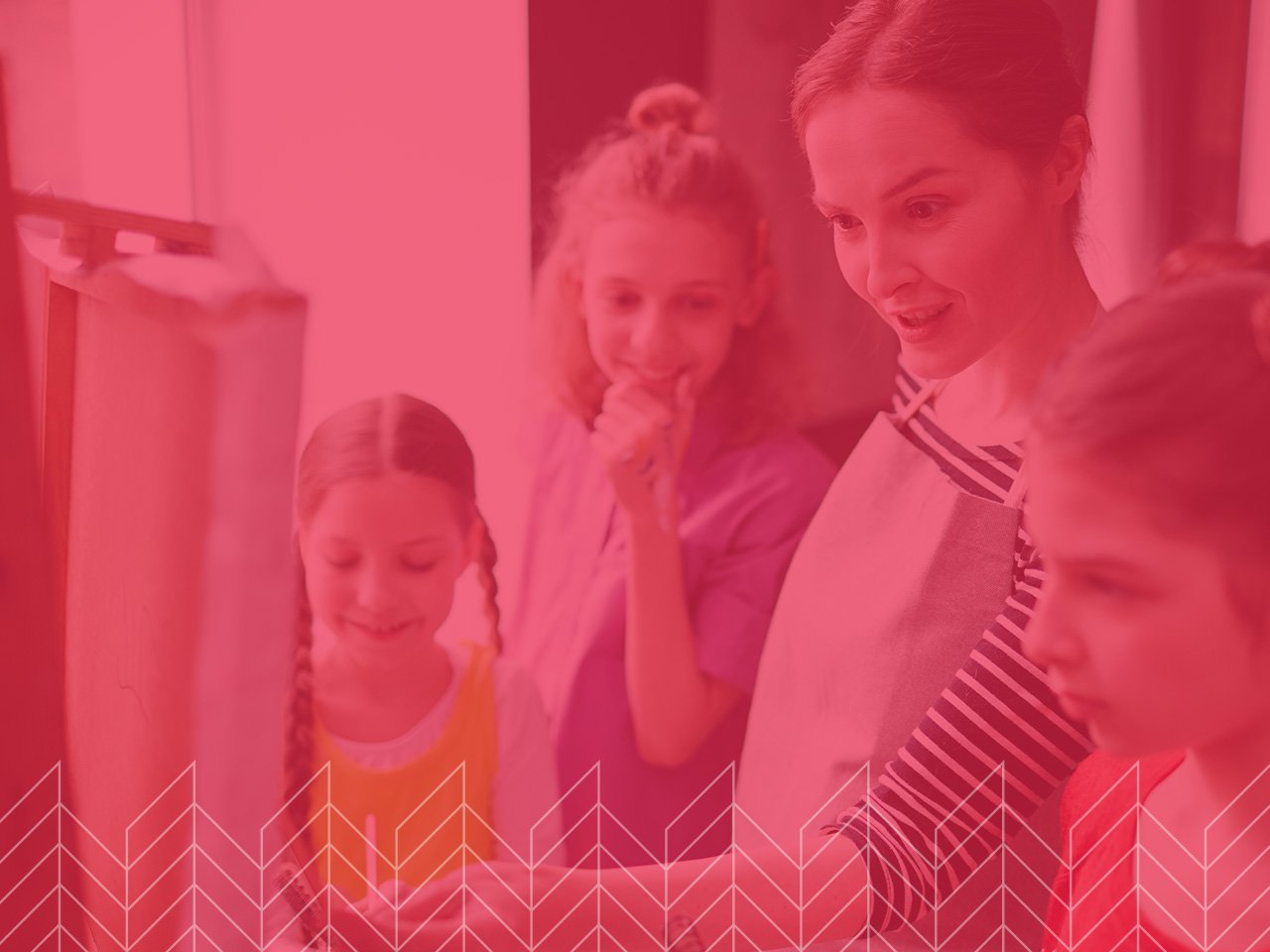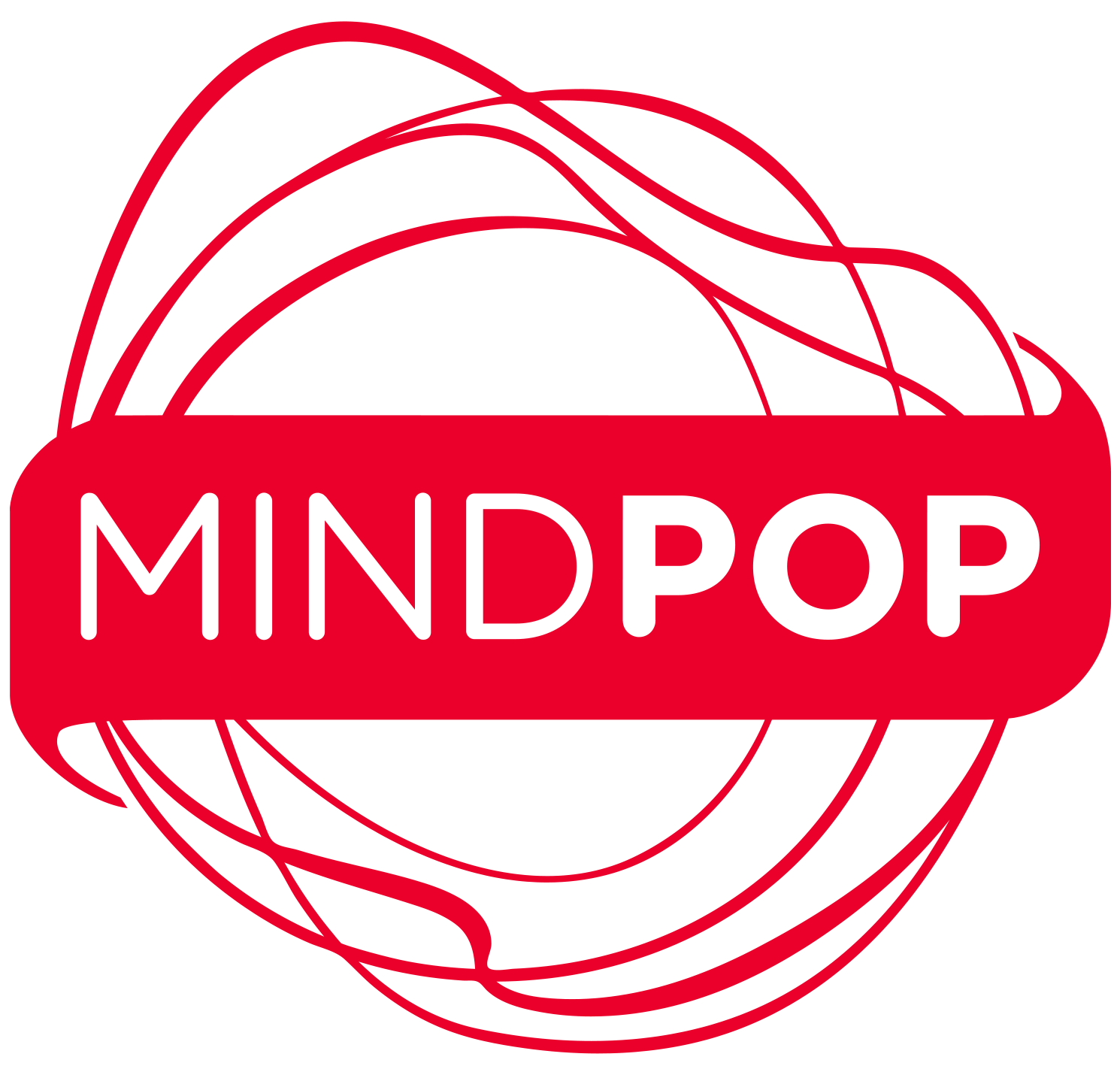
Ensuring that Each and Every Child Benefits from the Arts and Creative Learning
The Creative Learning Initiative is an investment in the future of Austin.
By ensuring every student is experiencing creative learning and the arts in and out of school, Austin students are better prepared for school and life. Led by MINDPOP, Austin ISD, the City of Austin and more than 200 arts organizations, this community-wide initiative is supported by an open collective of people and organizations that are using a systemic, sustainable approach and an innovative instruction model to transform education in Austin.
Measuring Success
55,000+
Students of 3,500+ Teachers in 90+ Schools Served
92%
Of Teachers Reported Increased Student Engagement
1.13%
Higher Attendance Rates in Arts-rich Schools
88%
Of Teachers Reported Improved Student Achievement
Research shows students of teachers using creative teaching strategies are attending school more (.61% in 2015–2016) and are passing STAAR reading (8% more likely) and math (3% more likely tests at a higher rate.
The difference is greater for the pass rates on the advanced reading (50% more likely) and advanced math (25% more likely) for students of teachers competent using creative teaching strategies. The Creative Learning Initiative is increasing students access to the dance and drama education and CLI students experience twice the number of community arts partners than do non-CLI students.
Learn More About the Creative Learning Initiative
-
Transforming the Educational Experience for Every Child
The Creative Learning Initiative works to increase access to the arts and ensure all students benefit from creative learning – in school and out of school. Leaders from across our community, led by MINDPOP, Austin ISD, the City of Austin and a 100+ arts organizations, we formed a collective impact partnership to make certain our efforts were comprehensive and sustainable.
By working together, we are increasing K-12 students access to learning music, dance, drama, visual arts, and the digital arts during school time. Austin ISD’s strong Secondary arts programs in all arts form and its strong elementary programs in music and visual arts provided the foundation for adding opportunities for dance, drama and digital arts at the elementary level. We’ve made great strides to make certain that all participating campuses provide these opportunities to all their students – not just select students in select campuses.
All teachers in the Creative Learning Initiative, regardless of the grade or subject they teach, learn of set of research-based instructional strategies that promote student engagement and improve student achievement. The professional development, created by MINDPOP, Drama for Schools, Forklift Danceworks, Contemporary Austin and individual master teachers, focuses on how, when and why to use these strategies across the curriculum and within the lesson cycle.
Arts organizations and teaching artists are active partners in providing students diverse arts experiences and powerful learning opportunities in schools and across the community. Whether providing a field trip or a long-term residency that allow students to create art guided by a professional artist. These school and arts partnerships expand the opportunities for students and connect them to their community in unique and powerful ways.
Arts organizations also spend professional development time aligning their programs to the needs of Austin ISD as well as constantly sharpening their instructional skills to best serve our young people.
The Parks and Recreation Department has committed to making certain their instructors also learn the creative teaching strategies AISD classroom teachers learn so that students out of school learning experiences are meaningful and engaging.
These efforts, combined with many others, represent the ways our city has created a movement to make certain all our students have access to the arts and the benefits of creative learning. Our students deserve it – and together we can make it a reality.
-
Comprehensive Approach to Creative Learning
Creative System
The Creative Learning Initiative uses a collective impact approach to organize all Austin stakeholders in creative learning around common goals and aligned efforts. By combining our resources and leveraging our expertise, we can expand our efforts sufficiently to serve all our students at a high level of quality. In addition to including all stakeholder groups, our approach addresses interventions and supports at all levels of the system including teachers, principals, district administrators, teaching artists, arts organizations, parks and recreation centers, cultural centers, and families. This systems-change approach amplifies the positive gains for each level.
Creative Campus Design
The Creative Learning Initiative uses a comprehensive Creative Campus design model developed by MINDPOP. Creative Campuses in the Creative Learning Initiative create individualized arts plans that address 9 factors:
Equitable access to sequential fine arts learning
Creative teaching across the curriculum
Arts Partnerships at every grade level
After school arts opportunities
Ongoing professional development in creative teaching
Community-building activities using the arts
Regular and frequent communication
Leadership and planning
Appropriate Facilities
Creative Teaching
Creative Teaching is one of three pillars of the Creative Learning Initiative (CLI). We define Creative Teaching as an instructional approach using specific techniques from drama, visual arts, music, movement, and digital media to promote student understanding. Rather than a set of curriculum designs, these strategies serve as an instructional framework to engage students, drive inquiry, promote rigor, and create personal connections to the material in any content area.
The specific strategies have been selected by MINDPOP and experts in the field because of their versatility across the lesson cycle and across the curriculum, they have a research base for effectiveness, they are easy to learn to do well and they are drawn from artistic practice. Because the strategies are instructional approaches rather than curricular approaches, they do not require a restructuring of the managed district curriculum or require teachers to make additional time. Teachers incorporate strategies into their existing lesson plans and school year in an infinite number of ways. They can be used across the lesson cycle to introduce, teach content, review, and assess any curriculum. These are not “one size fits all” strategies. Rather, they are designed to be used strategically to meet teacher, student, and instructional goals. Some strategies are appropriate for all grade levels and subject areas; others are better suited for particular age groups; others naturally support one subject more than another, and each strategy reinforces a unique set of the following cognitive behaviors:
Generate multiple ideas individually and collectively
Make creative choices to process and express learning
Construct mental or physical models of their understanding
Analyze and synthesize content
Translate symbol systems (e.g. text to image, image to spoken word, etc.)
Transfer understanding into new contexts
Contribute personal points of view
By design, Creative Teaching Strategies require students to actively blend their prior knowledge with creative judgment to develop physical and mental models that represent their understanding. Creative Teaching is often collaborative and relies on discussion and reflection to produce rigorous thinking and work products.
-
Innovating Urban Education
Research demonstrates the Creative Learning Initiative (CLI) positively impacts the district, its teachers and the students it serves.
Between 2012 and 2016, 44 AISD schools participated in CLI. They received intensive training on creative teaching across the curriculum, ranging from individual coaching, elementary drama and dance specialists, arts partner funding and ongoing support to designing and implementing an individualized campus plan to becoming more arts rich. Evaluation findings suggest CLI implementation had a positive impact on
The impact of CLI implementation on the district includes:
AISD is nearly halfway (45%) to its goal of 100% creative campuses.
Across the district, campuses participating in CLI were 10 times more likely to be arts rich than were non-CLI campuses.
CLI has helped to eliminate the arts-richness gap between Title I and non-Title I schools. Between 2014–2015 and 2015–2016, CLI boosted arts partnerships at Title I campuses to exceed partnerships at all other campuses, including all non-Title I campuses.
The impact of CLI implementation on teachers includes:
Eighty-five percent of CLI teachers reported positive changes in their teaching practices that resulted in positive student outcomes. Teachers reported positive experiences with professional development activities and increased skills. The vast majority of teachers reported the changes in their teaching practice helped them actively engage student (92%), positively affect student achievement (88%) and positively affect student behavior (85%).
CLI coaching support was effective in encouraging teachers to use creative teaching strategies more frequently and more competently. Teachers reported that their coaching experience increased their understanding of how, when, and why to use creative teaching strategies to support students’ learning. Teachers who had coaching support were also more likely to use these strategies more frequently than were teachers who did not have that support.
The impact of CLI implementation on students includes:
Student engagement and attendance rate increased as creative campus scores increased. The creative campus scores at CLI campuses were found to be significantly positively correlated with the student engagement scale of the Climate Survey and student attendance rates.
Students who had teachers who were more competent in implementing creative teaching strategies had better academic and social emotional learning (SEL) outcomes than did students with teachers who were less competent in creative teaching. In addition to significantly better attendance rates, students whose teachers were highly competent in creative teaching were more likely to meet the State of Texas Assessment of Academic Readiness (STAAR) passing standard in reading, and more likely to meet the advanced passing standards in reading and math. They also had significantly better SEL skills (respect for self and others, interaction with adults and peers, and responsibility for their own actions).
Show Your Support
-

Become a Strategic Arts Partner
Are you teaching artists and arts organizations arts-based learning opportunities to young people in and out of school? If yes, sign-up today!
-

Use Creative Teaching
Learn more about Advocacy, Communication and Social Media Resources with our helpful tools.
-

Volunteer
MINDPOP and AISD both work with volunteers to support large-scale workshops and community events.










